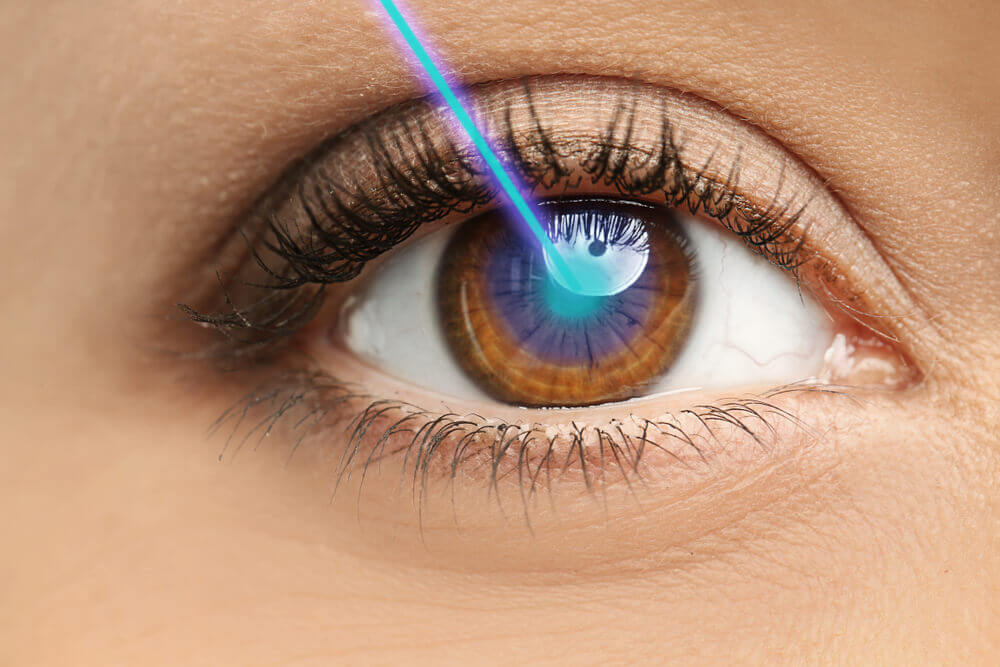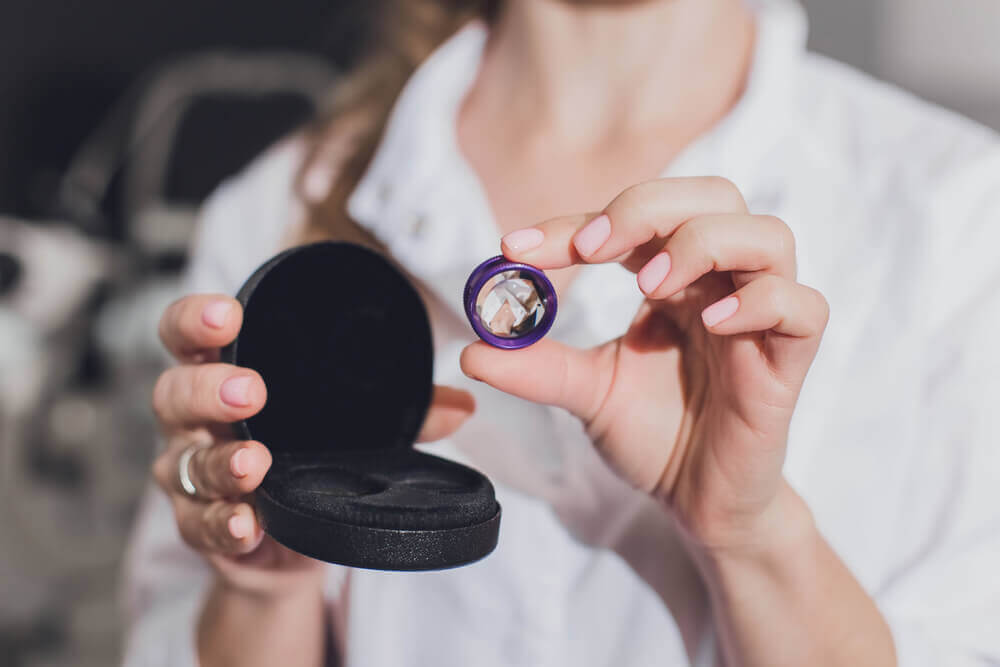Glaucoma

Glaucoma is often called the “silent thief of sight”, because most types typically cause no pain and produce no symptoms until noticeable vision loss occurs. For this reason, glaucoma often progresses undetected until the optic nerve has already been irreversibly damaged, with varying degrees of permanent vision loss.
But with acute angle-closure glaucoma, symptoms that occur suddenly can include blurry vision, halos around lights, intense eye pain, nausea, and vomiting. If you have these symptoms, make sure you see an eye care practitioner or visit the emergency room immediately so steps can be taken to prevent permanent vision loss.
Glaucoma can be very destructive to your vision, in fact, it’s the second-leading cause of blindness in the United States.
Diagnosis, Screening, and Testing for Glaucoma
During routine eye exams, a tonometer is used to measure your intraocular pressure or IOP. Your eye typically is numbed with eye drops, and a small probe gently rests against your eye’s surface. Other tonometers send a puff of air onto your eye’s surface.
Your eye pressure (intraocular pressure) will be measured with a tonometer. Some tonometers blow a puff of air onto your eye’s surface. Others rest gently against the surface of your eye, which will be numbed with eye drops.
An abnormally high IOP reading indicates a problem with the amount of fluid (aqueous humor) in the eye. Either the eye is producing too much fluid, or it’s not draining properly.
Normally, IOP should be below 21 mmHg (millimeter of mercury) – a unit of measurement based on how much force is exerted within a certain defined area.
If your IOP is higher than 30 mmHg, your risk of vision loss from glaucoma is 40 times greater than someone with intraocular pressure of 15 mmHg or lower. Other methods of monitoring glaucoma involve the use of sophisticated imaging technology – such as scanning laser polarimetry (SLP), optical coherence tomography (OCT), and confocal scanning laser ophthalmology – to create baseline images and measurements of the eye’s optic nerve and internal structures.
Visual field testing is a way for your eye doctor to determine if you are experiencing vision loss from glaucoma. Visual field testing involves staring straight ahead into a machine and clicking a button when you notice a blinking light in your peripheral vision. The visual field test may be repeated at regular intervals to make sure you are not developing blind spots from damage to the optic nerve or to determine the extent or progression of the vision loss from glaucoma.
Gonioscopy also may be performed to make sure the aqueous humor (or “aqueous”) can drain freely from the eye. In gonioscopy, special lenses are used with a biomicroscope to enable your eye doctor to see the structure inside your eye (called the drainage angle) that controls the outflow of aqueous and thereby affects intraocular pressure.
Types of Glaucoma
The two major types of glaucoma are chronic and primary-angle glaucoma (POAG) and acute angle-closure glaucoma. The “angle” in both cases refers to the drainage angle inside the eye that controls aqueous outflow. Other variations include normal-tension glaucoma, pigmentary glaucoma, secondary glaucoma, and congenital glaucoma.
- Primary open-angle Glaucoma – about half of Americans with chronic glaucoma don’t know they have it. This common type of glaucoma gradually reduces your peripheral vision without other symptoms. By the time you notice it, permanent damage already has occurred.
- Angle-closure Glaucoma – or narrow-angle glaucoma produces sudden symptoms such as eye pain, headaches, halos around lights, dilated pupils, vision loss, red eyes, nausea, and vomiting. These signs may last for a few hours, then return again for another round. Each attack can cause progressively more vision loss.
- Normal-tension Glaucoma – Like POAG, normal-tension glaucoma (also called normal-pressure glaucoma, low-tension glaucoma, or low-pressure glaucoma) is a type of open-angle glaucoma that can cause visual field loss due to optic nerve damage. But in normal-tension glaucoma, the eye’s IOP remains in the normal range. Also, pain is unlikely and permanent damage to the eye’s optic nerve may not be noticed until symptoms such as tunnel vision occur. The cause of normal-tension glaucoma is not known. But many doctors believe it is related to poor blood flow to the optic nerve. Normal-tension glaucoma is more common in those who are Japanese, are female, and/or have a history of vascular disease.
- Pigmentary Glaucoma – this rare form of glaucoma is caused by clogging of the drainage angle of the eye by pigment that has broken loose from the iris, reducing the rate of aqueous outflow from the eye. Over time, an inflammatory response to the blocked angle damages the drainage system. You are unlikely to notice any symptoms of pigmentary glaucoma, though some pain and blurry vision may occur after exercise. Pigmentary glaucoma most frequently affects white males in the mid-30s to mid-40s.
- Secondary Glaucoma – symptoms of chronic glaucoma following an eye injury could indicate secondary glaucoma, which also may develop with the presence of eye infection, inflammation, a tumor, or enlargement of the lens due to a cataract.
- Congenital Glaucoma – This inherited form of glaucoma is present at birth with 80 percent of cases diagnosed by age one. These children are born with narrow angles or some other defect in the drainage system of the eye. It’s difficult to spot signs of congenital glaucoma because children are too young to understand what is happening to them. If you notice a cloudy, white, hazy, enlarged, or protruding eye in your child, consult your eye doctor. Congenital glaucoma typically occurs more in boys than in girls.
Glaucoma Treatments

Treatment can involve glaucoma surgery, lasers, or medication, depending on the severity. Eye drops with medication aimed at lowering IOP usually are tried first to control glaucoma.
Because glaucoma often is painless, people may become careless about the strict use of eye drops that can control eye pressure and help prevent permanent eye damage.
In fact, non-compliance with a program of prescribed glaucoma medication is a major reason for blindness caused by glaucoma.
If you find that the eye drops you are using for glaucoma are uncomfortable or inconvenient, never discontinue them without first consulting your eye doctor about a possible alternative therapy.





